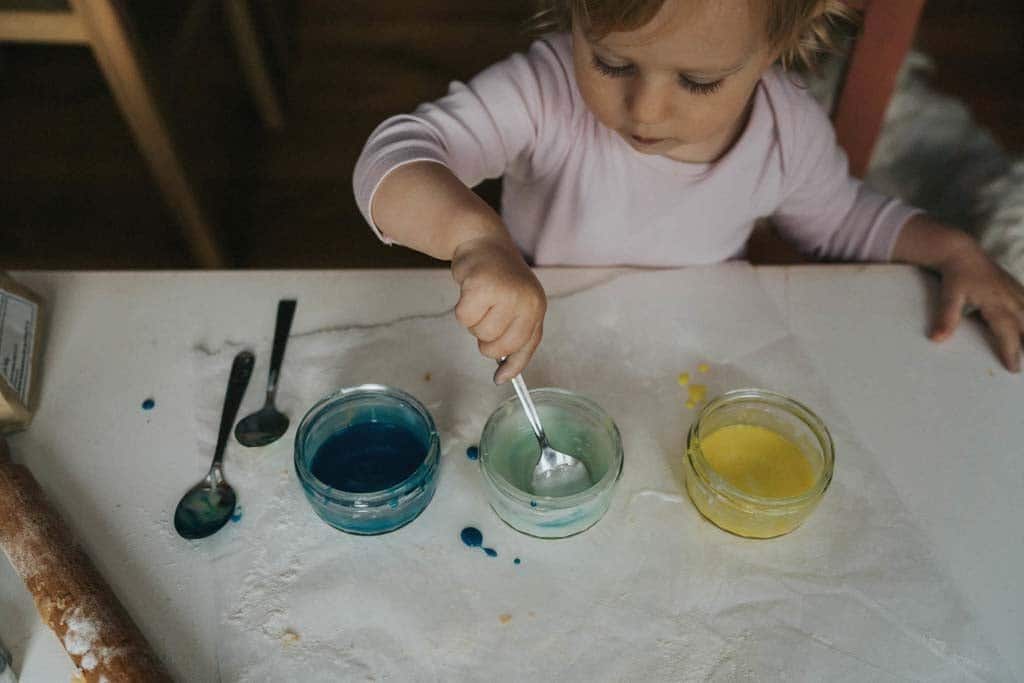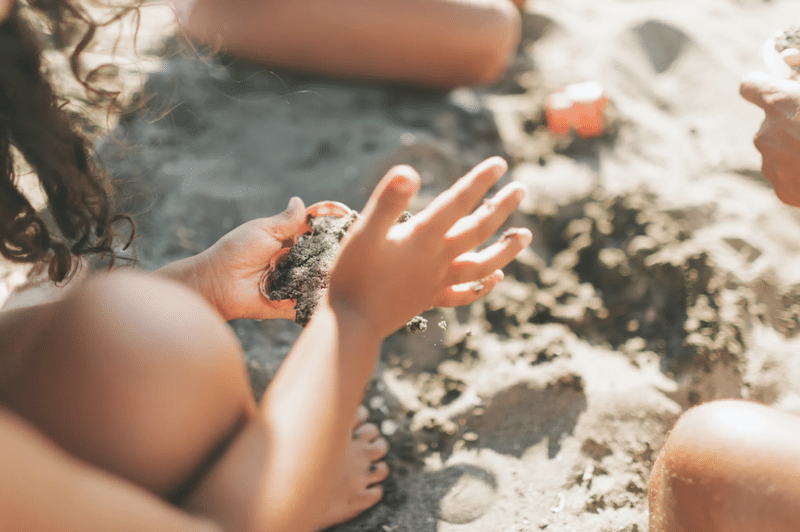Take a moment to look around you.
How many colors, shades and hues can you spot?
A quick glance out of the window reveals a world of color that brings a vibrancy to life and influences our mood and emotions.
Newborns have limited color recognition. Somewhere around 1 or 2 months of age, babies begin to recognize primary colors. By 5 months of age, most babies have full color recognition and begin to develop color matching skills, although colors remain less vivid than for adults. Young children tend to gravitate towards bolder-colored toys and objects, as these colors are easier to distinguish. They begin to become engaged with sorting colors activities. Many toys and household objects can be adapted to provide sorting colors activities and color matching skills practice through hands-on learning. Building blocks have more use than simple tower building – you can also encourage your toddler to group blocks by colour for a hands-on color sorting activity.
As they continue to grow and develop, children develop more nuanced color language and greater refinement to sort and distinguish between colors, hues and tones. It’s important to support children with these emerging skills, so that they can make the most of the colorful world around them. Building color matching skills for toddlers through hands-on learning activities need not cause you hassle.
In this article, we explore practical and engaging ways to embed color recognition, color matching skills and color sorting activities with your toddler through fun hands-on learning and play.
Why Color Recognition Is Essential for Early Development
If you’ve ever needed to replace the button on a shirt, you’ll have a sense of how color recognition is an important problem-solving skill. As you rummage around your haberdashery supplies, you’re searching for a button of the right size, shape, and color as the existing buttons, paying attention to similarities and differences so you can discount buttons of the “wrong” color. You then begin to use your cognitive ability to compare to find just the right shade of blue button. You’re using your intuitive color matching and color sorting skills.
Identifying colors using color matching skills is a key cognitive ability, and an important developmental milestone for your little one. Color is an important way we classify, identify and compare as humans, and its important young children are supported to develop these skills. Color recognition allows color matching skills for toddlers to be honed and underpins future learning in science, technology and mathematics (STEM) as well as creativity. Supporting your infant with their color recognition and through hands-on learning via sorting colors activities and provides the foundation for future learning and future problem solving.
Being able to name and distinguish between colors supports language development, too. Children need to be able to articulate their wants, needs and preferences using descriptive language – having the ability to say “I want the red one” supports them to clearly communicate and meet their needs. Sorting colors activities is a great way to support your toddlers color recognition vocabulary.

Hands-On Learning to Build Color Matching Skills for Toddlers
So, how can toddlers grow their color recognition, color matching skills and their ability to compare colors? Well, like most things, young children learn through play. Hands-on learning via color sorting activities is essential for toddlers’ healthy development. Having access to a supportive environment full of colors provides your toddler with plenty of color matching opportunities.
Ensure their environment is rich in vibrant colors. Remember, young children will initially find it hard to recognise muted and pastel tones. Include colorful objects and items that your toddler can touch and handle to create hands-on learning options.
Think, too, about hands-on learning color matching opportunities when you’re out and about. A simple trip to the greengrocers is a chance to develop color matching skills for toddlers by:
- Finding some red apples,
- Choosing 3 different color vegetables
- Expressing whether they prefer purple or green grapes?
- Placing vegetables of the same color different shopping bags.

Fun Sorting Colors Activities for Toddlers
There’s plenty of sorting color toys and activities on the market. But you needn’t spend a fortune to build in hands-on learning color sorting. You are aiming for variety and adventure as you embrace color sorting. Try some of the following hands-on learning color sorting learning activities:
- Head out on a nature walk to collect fallen leaves. Make a colorful display as you engage in a leaves color sorting activity.
- Set up a simple scavenger hunt – find an item for each color of the rainbow. An outdoors scavenger hunt allows your child to find colors in nature – you could even create a homemade crown decorated with their colorful natural finds.
- Have a race – who will be first to find 5 pairs of matching socks as a simple laundry color sorting activity?
- Bake fairy cakes together, and then offer a selection of colorful toppings. Chat through what color topping you want to place on each cake. Together you can sort through the toppings to find the right color.

Creative Ways to Encourage Color Exploration
Color is essential to creativity. Naming, selecting and placing color through mark making is essential for artistic expression.
Creative play is jam-packed with color recognition, color matching skills and color sorting activities potential through hands-on learning. It’s important, then, to offer your toddler creative opportunities to explore color and express themselves through color. Ensure your child has access to creative materials – crayons are a simple and inexpensive resource. Aim to have different shades of the same color – a dark burgundy and a lighter, paler red, a deep hunter green and a bright lime crayon, for example, to help with hands-on learning through color matching and color sorting. Look to also offer access to paints – a great way for your child to do some hands-on learning through experimentation with blending and mixing colors.
Chatting through and narrating their creations helps to embed this creative expression – “You’ve used a dark blue there for the door, and a light blue for the sky”. Cooking and preparing colorful food together builds connection and color recognition, as well as supporting a healthy diet, as you “eat the rainbow”.

Enjoy all Things Colorful with your Little One
Hopefully this article has provided plenty of engaging ways to embed hands-on learning of color recognition, color matching skills and color sorting activities.
We’ve seen how color recognition, color matching skills and hands-on color sorting activities hone essential life enhancing skills. Despite having limited color recognition at birth, babies begin to see and connect with color as they grow, and the environment you provide for your child is key to this development.
Providing opportunities for infants to have access to color recognition, color matching and sorting colors activities makes a huge difference to their development and helps to enrich their world. There’s plenty of ideas here within this article, and you are likely to have your own hands-on fun ideas, too. Give some of them a try with your toddler. With practice, you’ll soon be able to find many other “golden opportunities” to engage and connect with color. My hope is you’ll be “tickled pink” at how much you and your child enjoy these moments, and “feeling blue” about engaging with color matching skills and color sorting activities will be a thing of the past!




